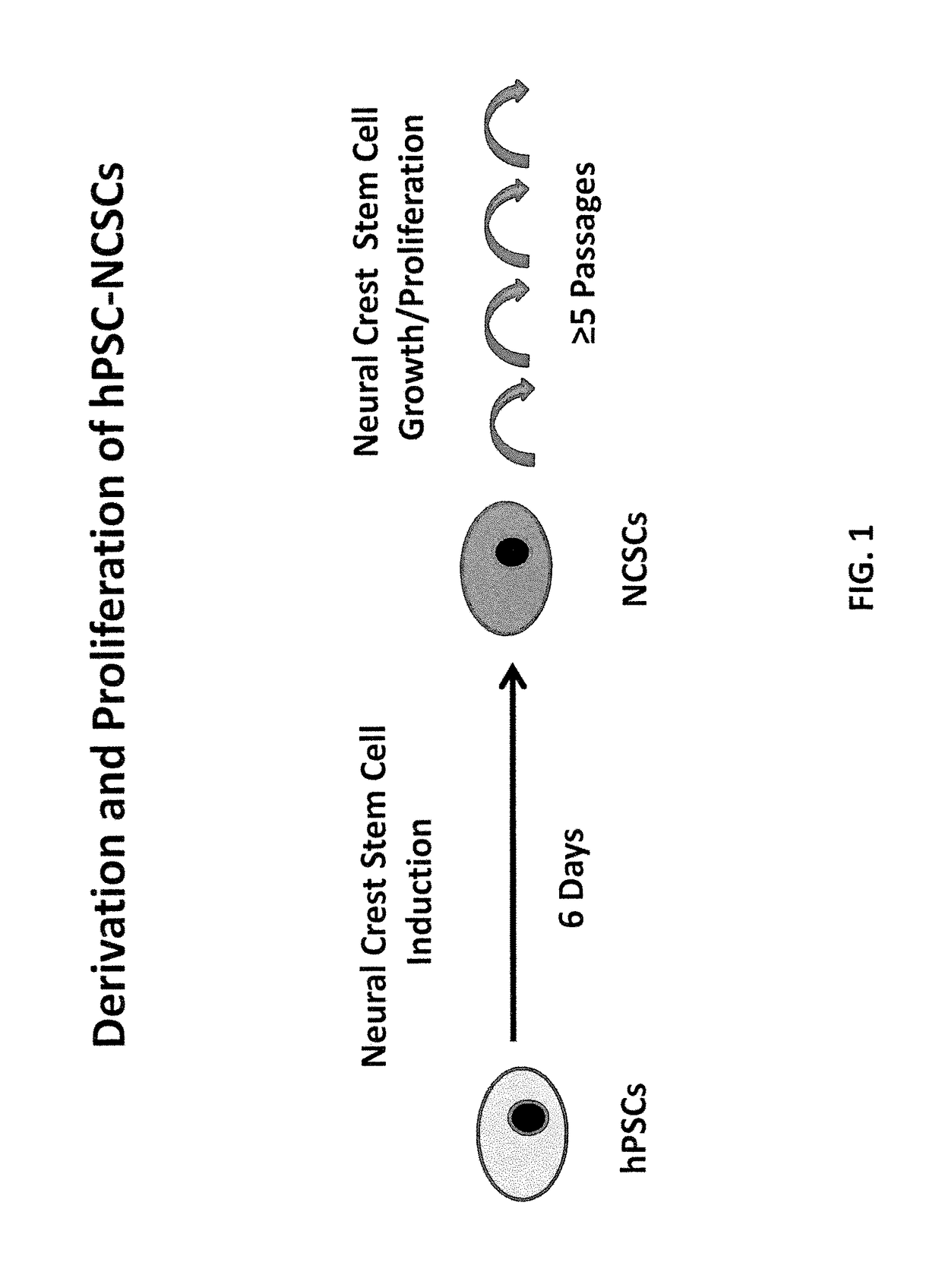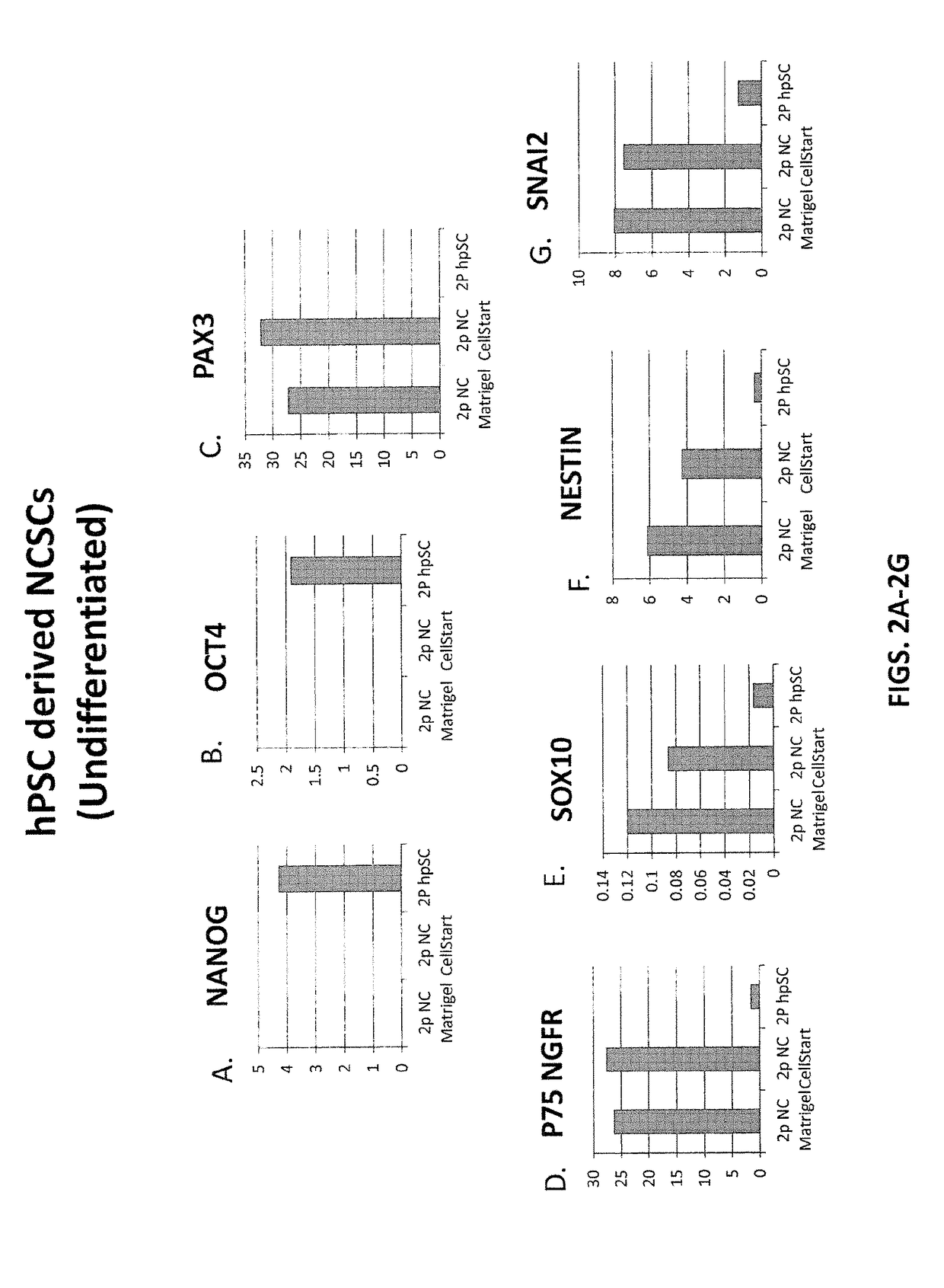Derivation of neural crest stem cells and uses thereof
a neural crest and stem cell technology, applied in the field of stem cells, can solve problems such as unspecialized cells capable of renewing themselves
- Summary
- Abstract
- Description
- Claims
- Application Information
AI Technical Summary
Benefits of technology
Problems solved by technology
Method used
Image
Examples
example 1
[0067]Feeder Growth of Human Parthogenetic Stem Cells (hpSCs). The hpSCs were first maintained on mitomycin-C inactivated mouse embryonic fibroblast (Millipore) feeder layer in embryonic stem medium: Knock Out DMEM / F12 (Life Technologies), 2 mM L-glutamine (GlutaMax-I, Invitrogen), 0.1 mM MEM nonessential amino acids (Life Technology), 0.1 mM β-mercaptoethanol (Life Technologies), penicillin / streptomycin / amphotericin B (100 U / 100 μg / 250 ng) (MP Biomedicals) and 5 ng / ml bFGF (Peprotech). Cells were passaged with dispase or collagenase IV (both Life Technologies) every 5-7 days with split ratio of 1:4 or 1:6
[0068]Feeder-Free Growth of hpSCs. The hpSC line LLC2PH were then transferred to Vitronectin (BD Biosciences) coated plates and grown with Essential 8 medium (Invitrogen).
[0069]Neural Crest Stern Cell (NCSC) Derivation and Growth. Neural crest induction is performed by treating proliferating, 80-90% confluent feeder-free hpSCs cultures, with DMEM / F12-GlutaMAX basal medium supplemen...
PUM
| Property | Measurement | Unit |
|---|---|---|
| time | aaaaa | aaaaa |
| compositions | aaaaa | aaaaa |
| colors | aaaaa | aaaaa |
Abstract
Description
Claims
Application Information
 Login to View More
Login to View More - R&D
- Intellectual Property
- Life Sciences
- Materials
- Tech Scout
- Unparalleled Data Quality
- Higher Quality Content
- 60% Fewer Hallucinations
Browse by: Latest US Patents, China's latest patents, Technical Efficacy Thesaurus, Application Domain, Technology Topic, Popular Technical Reports.
© 2025 PatSnap. All rights reserved.Legal|Privacy policy|Modern Slavery Act Transparency Statement|Sitemap|About US| Contact US: help@patsnap.com



